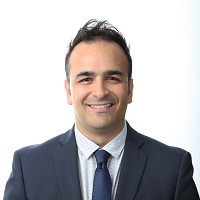To ensure international deliveries go smoothly, you need to clarify:
- Who pays for the shipping insurance or duties owing on the cargo?
- Where and when will the cargo be delivered?
- *Will it need to be collected aboard ship by the receiver?
Thousands of dollars and weeks of potential delays may depend on every party understanding the answers to these questions.
Incoterms are three-letter acronyms that simplify and clarify the responsibilities of buyers and sellers in a global sales contract. Using them greatly reduces the potential for disputes over logistics while clarifying the transfer of risk.
Incoterms help buyers and sellers easily understand the costs, risks and obligations for each party. Understanding them is crucial for Canadian exporters intent on diversifying their export markets as they deal with the shipping challenges that affect their supply chain.
Without Incoterms, having a contract is simply not enough, especially given the potential language barriers and different meanings around a particular term or phrase.
Incoterms describe the obligations, risks and costs in a domestic or international trade transaction. Only one Incoterm is used at a time and a negotiated contract helps clarify and refine the specific term used.
- Under obligations, either the buyer or seller must organize transportation, insurance of the goods, or obtain shipping documents or permits, depending on the term used.
- Where and when the seller delivers the goods is when risk transfers from the seller to the buyer.
- For costs, including transportation, packaging, unloading and duties, charges will be made to either the seller’s or buyer’s account, depending on the term used.
Each of these obligations, risks and costs are described in the Incoterms 2020 rule book.
Note: Delivery of cargo isn’t rigidly defined (for example, by reaching the buyer’s warehouse). Instead, it refers to the seller fulfilling the obligation of the terms of sale, or to the seller completing a contractual obligation. This means that “delivery” can take place at any point in the physical movement of the cargo. Make sure that everyone involved in the transaction understands all the delivery details to avoid trouble down the road.
What do Incoterms not cover?
Incoterms are generally incorporated in international sales contracts, but don’t:
- Address all the conditions of a sale
- Identify the goods being sold nor list the contract price
- Reference the method nor timing of payment negotiated between the seller or buyer
- When title or ownership of the goods passes from the seller to buyer
- Specify which documents must be provided by the seller to the buyer to facilitate the customer's clearance process in the buyer’s country
- Address liability for the failure to provide the goods in conformity with the contract of sale, delayed delivery, nor dispute resolution mechanisms
Last revised in 2020, the 11 Incoterms are divided into two groups, based on modes of transportation.
Incoterms for transport
1. EXW (ex works): The seller makes the goods available at their premises. The buyer is responsible for all costs and risks involved in taking the goods from the seller’s premises to the desired destination.
2. FCA (free carrier): The seller delivers the goods to a carrier or another person chosen by the buyer at the seller’s premises or another specified place.
3. CPT (carriage paid to): The seller pays for the carriage of the goods to the named destination. The risk transfers to the buyer as soon as the goods are handed over to the carrier.
4. CIP (carriage and insurance paid to): Similar to CPT, but the seller also pays for insurance against the buyer’s risk of loss or damage to the goods during transit.
5. DAP (delivered at place): The seller delivers when the goods are placed at the disposal of the buyer on the arriving means of transport, ready for unloading at the named place of destination.
6. DPU (delivered at place unloaded): The seller delivers when the goods are unloaded and placed at the disposal of the buyer at the named place of destination.
Note: Ambiguity exists regarding who pays for unloading.
7. DDP (delivered duty paid): The seller is responsible for delivering the goods to the named place in the country of the buyer, including all costs and risks of carrying out customs formalities and paying duties and taxes.
Note: Ambiguity exists regarding whether tariffs are included as duties.
Incoterms for sea and inland waterway transport
1. FAS (free alongside ship): The seller delivers when the goods are placed alongside the vessel at the named port of shipment. The buyer is responsible for all costs and risks from that moment.
2. FOB (free on board): The seller delivers when the goods pass the ship’s rail at the named port of shipment. The buyer is responsible for all costs and risks from that point.
3. CFR (cost and freight): The seller pays the costs and freight to bring the goods to the port of destination. Risk transfers to the buyer once the goods pass the ship’s rail in the port of shipment.
4. CIF (cost insurance and freight): Similar to CFR, but the seller also pays for insurance against the buyer’s risk of loss or damage to the goods during transit.
As an exporter, there are potential financial risks that can be mitigated with Export Development Canada (EDC) credit insurance. But depending on the Incoterm negotiated between the buyer and seller, different levels of insurance coverage may be required.
The Incoterms 2020 rules provide specific levels of insurance coverage for CIF and CIP rules.
- Under the CIF rule (only to be used for sea freight trade), the Institute Cargo Clauses remain the default level when it comes to coverage. The seller or buyer can agree to higher levels of insurance, but they must agree in writing, so that a proper policy can be underwritten.
- The CIP rule has been undated to a higher level of insurance coverage that should be compatible with the Institute Cargo Clauses (A).
Back in the early days, international trade was mostly based on conventions and informal practices. There were no globally recognized standards to create efficiencies in global trade. The International Chamber of Commerce (ICC) was founded post-First World War, and shortly afterward, an industry standard was created: The International Commercial Teams, known as Incoterms.
Incoterms have evolved to keep up with changes in trade regulations and business advancements. They’ll continue to evolve and new revisions will be added to coincide with commerce trends and innovations. For example, the general obligations (A1/B1) provision was revised in 2020, making electronic documents and forms acceptable in lieu of paper documents.
Canadian exporters, importers and international trade practitioners should keep up to date with these changes and revisions and introduce them in their negotiations to ensure contracts clearly outline obligations, risks and costs.
These resources will help you use Incoterms effectively. You’ll find official resources from the International Chamber of Commerce (ICC), as well as the Forum for International Trade Training (FITT).
- The ICC has created the Incoterms 2020 app, which gives easy access to a wealth of practical information on your mobile device. The free app can be downloaded from the Apple App Store and Google Play.
- Incoterm 2020 online course, presented by FITT and the Canadian Chamber of Commerce (CCC), is designed to help international trade professionals gain an understanding of the Incoterms rules. This course provides background information, Incoterms 2020 definitions/rules and obligations, and details about the main changes to the terms. This professional training is excellent for beginners and will also serve as an in-depth refresher with important updates for experienced professionals.
- The Incoterms 2020 wall chart outlines the obligations, costs and risks of the buyer and seller under each of the 11 rules. The handy chart can be easily printed and kept as a reference guide.
Note: The chart should always be used in conjunction with the Incoterms 2020 rule book.
- ICC registered trainers of the Incoterms rules are candidates who must undergo an intensive selection process. Candidates must be nominated by their local ICC national committee and then, they must pass the ICC Incoterms 2020 registered trainer exam. You can contact a registered Incoterms trainer in Canada through FITT. Reach out to the association here.
- EDC’s four-part article series takes a closer look at each of the Incoterms 2020 rules, with explanations and examples to help you better understand the universal trade terms.
EDC’s Export Help Hub provides expert answers to the most frequently asked trade-related questions. Create a free MyEDC account for the answers to these questions about Incoterms, or ask an advisor a question of your own.






